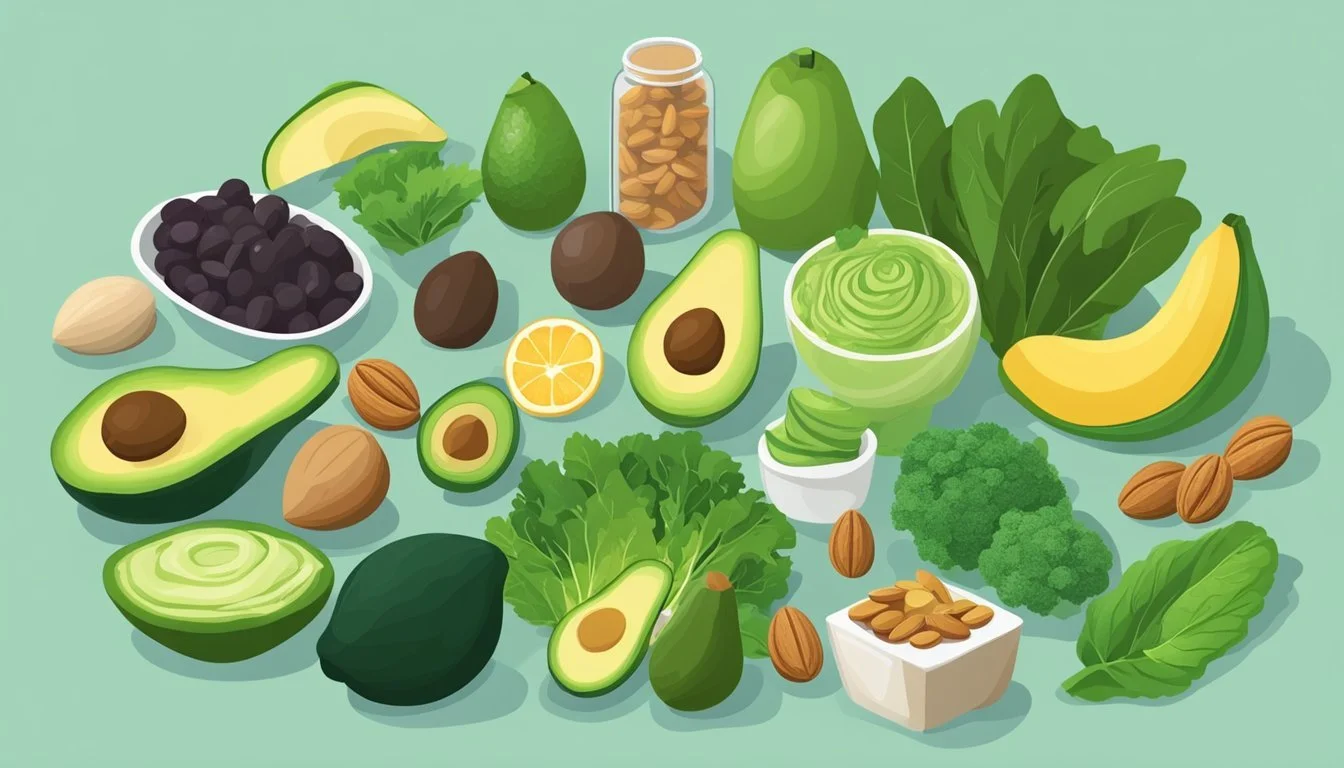Keto Diet: Glycemic Index Impacts and Low-
Carb Food Choices
The ketogenic diet, commonly referred to as keto, emphasizes a high fat, moderate protein, and low carbohydrate intake to shift the body's metabolism away from carbs and towards fat and ketones. Traditional food guidelines often use the glycemic index (GI) as a measure of how quickly foods raise blood glucose levels after consumption, with values ranging from 0 to 100. The construct of the glycemic index is relevant for diets focusing on blood sugar control, and though the keto diet's macronutrient breakdown naturally steers away from high-GI foods, understanding the intersection of the ketogenic diet with glycemic index principles can further optimize nutritional strategies for those seeking weight loss or blood sugar management.
On a ketogenic diet, the low carbohydrate threshold helps maintain stable blood sugar levels, an aspect critical for achieving and sustaining ketosis. This metabolic state, where the body burns fat for fuel due to limited glucose availability from carbohydrates, is the cornerstone of the ketogenic approach. A nuanced understanding of the glycemic index can augment keto's benefits, as even low-carbohydrate foods can vary in their GI scores. By choosing foods with a lower GI, individuals on a ketogenic diet can enhance their blood sugar control, which may be particularly beneficial for people with type 2 diabetes.
It is imperative for followers of the ketogenic diet to not only monitor their macronutrient intake but to also be aware of the glycemic impact of the foods they consume. Knowing the GI of foods can provide additional guidance on food selections that support the maintenance of ketosis. As blood sugar levels and ketone production are key biometrics for the keto-adapted individual, leveraging the glycemic index can further refine a ketogenic diet to align with health goals and preferences.
Understanding Keto Diet and Glycemic Index
The ketogenic diet has gained popularity for its effectiveness in weight loss and blood sugar control, intricately linked to the concept of glycemic index.
Fundamentals of Keto Diet
The keto diet is a high-fat, low-carbohydrate dietary regimen aiming for a metabolic state called ketosis, where the body burns fat for energy instead of carbohydrates. Carbohydrates are usually restricted to fewer than 50 grams per day to maintain this state. During ketosis, glucose levels decrease, prompting the body to produce ketone bodies for energy.
Glycemic Index Explained
The glycemic index (GI) rates foods containing carbohydrates based on their potential to raise blood sugar levels. This scale ranges from 0 to 100, with pure glucose at 100 as a reference point. Foods with a GI under 55 are considered low and are slower to raise blood sugar levels, promoting better glycemic control.
Relationship Between Keto and Glycemic Index
On a ketogenic diet, individuals focus on low-GI foods to maintain lower blood sugar levels and support ketosis. Since the ketogenic diet restricts carbohydrate intake, foods with a high glycemic index are typically avoided to stabilize glucose levels and sustain fat-burning. By choosing low-GI foods, individuals following a keto diet can better manage their carbohydrate intake and maintain the metabolic state of ketosis.
Impact on Blood Sugar and Insulin Resistance
The ketogenic diet shows a significant impact on blood sugar regulation and can influence insulin sensitivity. Focused dietary choices play a crucial role in managing these biological parameters.
Blood Sugar Levels and Glycemic Control
The ketogenic diet's restriction of carbohydrates contributes to lower blood sugar levels, as evidenced by a decrease in fasting blood glucose and glycated hemoglobin A1c. These biomarkers are central to evaluating glycemic control. Typically, a ketogenic diet can lead to:
A reduction in fasting blood glucose by an average of 1.29 mmol/L.
A decrease in glycated hemoglobin A1c by 1.07.
Such improvements support the ability of the ketogenic diet to offer better blood sugar control and may offer an adjunctive role in managing type two diabetes.
Insulin Resistance and Keto Diet Benefits
Adhering to a ketogenic diet may positively influence insulin resistance, a condition where cells fail to respond to insulin effectively. The diet's high-fat, low-carbohydrate profile requires less insulin for sugar metabolism, which may help to reduce insulin resistance. Benefits of the ketogenic diet in the context of insulin resistance include:
Potentially reversing signs of metabolic syndrome.
Lowering or eliminating insulin requirements for individuals with type two diabetes.
Contributing to an overall improvement in the insulin sensitivity of the body's cells.
The ketogenic diet's impact on insulin resistance highlights its therapeutic potential in metabolic health management.
Keto Diet and Diabetes Management
The ketogenic diet is frequently explored as an intervention for managing type 2 diabetes due to its potential to improve glycemic control and lipid profiles. This dietary approach emphasizes the consumption of high-fat, moderate-protein, and low-carbohydrate foods.
Type 2 Diabetes and Ketogenic Lifestyle
Individuals with type 2 diabetes may find the ketogenic diet beneficial as it can lead to a significant reduction in blood glucose levels and improvements in the lipid profile. The diet's low carbohydrate intake can reduce blood sugar spikes, which in turn may decrease the need for diabetes medications. However, it's important to note that dietary changes should be made under the guidance of healthcare professionals to ensure nutritional adequacy and safety.
Monitoring Blood Glucose and A1C Levels
A key component of managing diabetes is frequent monitoring of blood glucose and hemoglobin A1C levels. The latter provides a three-month average of blood sugar levels. Adopting a ketogenic lifestyle can lead to changes in these values, often necessitating adjustments in medication dosages. Regular monitoring ensures that blood glucose levels remain within target ranges and avoids potential hypoglycemic events.
Keto Diet as a Strategy for Diabetes Prevention
While more research is needed to make conclusive claims, some evidence suggests that a ketogenic diet could be effective in diabetes prevention. A reduction in carbohydrate intake can help prevent the onset of insulin resistance, which is a key factor in the development of type 2 diabetes. It's important for individuals to consult with healthcare providers before starting a ketogenic diet to ensure it aligns with their specific health needs and goals.
Carbohydrates and Keto Diet Foods
In a ketogenic diet, managing carbohydrate intake is crucial as it focuses on a low-carb, high-fat eating pattern. This section discusses the dynamics of carbs, fiber, and the selection of appropriate low-glycemic foods within the keto dietary framework.
Understanding Carbs and Net Carbs
Carbohydrates are found in a wide range of foods and are classified by their chemical structure into sugars, starches, and fiber. On a ketogenic diet, individuals track net carbs, which is the total number of carbohydrates minus dietary fiber and sugar alcohols, as they have minimal impact on blood sugar levels. This calculation is paramount because the body can enter ketosis, a state where it burns fat for energy instead of carbs, only when net carb intake is kept to a minimum, typically between 20-50 grams per day.
Role of Fiber in a Low-Carb Diet
Fiber, the indigestible part of plant foods, does not raise blood sugar and is therefore not counted towards net carbs. It aids in digestion and can help one feel full, which is beneficial for weight management. Fiber-rich vegetables like leafy greens are an important part of a ketogenic diet. Since they are non-starchy vegetables, they contain lower amounts of digestible carbs and are a good fit for maintaining a low carb intake without sacrificing essential nutrients.
Selection of Low-Glycemic Keto Foods
The glycemic index (GI) is a value used to measure how much specific foods increase blood sugar levels. Foods with a low GI are preferred in a ketogenic diet as they help maintain stable blood sugar levels. Foods suitable for a keto diet generally include:
Seafood: High in protein and fat, low in carbs.
Cheese: Rich in fat, protein, and calcium while being low in carbs.
Avocados: High in monounsaturated fats and very low in net carbs.
Meat and Poultry: Staple of the keto diet as they contain no carbs and are rich in B vitamins and several minerals.
Eggs: High in protein and fats, and contain less than 1 gram of carbs per egg.
Low-Carb Vegetables: Non-starchy vegetables like spinach, kale, and broccoli offer nutrients and fiber while keeping carb counts low.
Choosing these foods strategically helps maintain a balanced, keto-friendly diet that adheres to low net carb consumption.
Potential Health Benefits and Risks
Evaluating the ketogenic diet reveals a diverse spectrum of potential health benefits and risks. These can range from metabolic improvements to concerns over long-term health effects.
Weight Loss and Metabolic Health Improvements
The ketogenic diet, by utilizing fat as the primary energy source, may induce weight loss and improve metabolic health. A consistent intake of fewer than 50 grams of carbohydrates per day can lead to nutritional ketosis, a state that encourages the body to burn stored fat. This can be particularly beneficial for individuals battling obesity. Evidence suggests that along with weight loss, the ketogenic diet can result in improved blood sugar regulation, which is a pivotal aspect of metabolic health.
Cholesterol, Lipid Profile, and Heart Disease
Cholesterol levels and lipid profiles are a major concern in the context of the ketogenic diet due to its high-fat content. Some studies have reported an initial increase in LDL cholesterol ("bad" cholesterol) that may stabilize over time. However, the ketogenic diet may also increase HDL cholesterol ("good" cholesterol) and lower triglycerides, which could offer a protective effect against heart disease.
Ketogenic Diet and Long-Term Health Risks
Long-term adherence to a ketogenic diet may pose health risks. There is limited research on the chronic effects of such high fat intake. Some potential concerns include an increased risk of cancer and other diseases due to the high saturated fat content. Nutrient deficiencies are another risk, as the diet restricts or eliminates many carbohydrate-rich fruits, vegetables, and whole grains that provide essential vitamins and minerals. It's important to monitor health parameters and consult with a healthcare professional when considering a prolonged ketogenic diet.
Adjusting to the Ketogenic Lifestyle
Adapting to the ketogenic lifestyle requires understanding and managing the initial transition phase, preparing appropriate meals and snacks, and adopting sustainable practices for long-term adherence.
Managing Keto Flu and Diet Transition
Individuals may experience "keto flu" as their bodies adjust from burning glucose to burning fat for energy. Symptoms like fatigue and headaches are common but manageable. Staying hydrated and maintaining electrolyte balance through mineral-rich foods can mitigate these effects. Ketosis, a metabolic state achieved on the ketogenic lifestyle, begins once the body efficiently transitions to fat as its primary energy source.
Preparing Keto Meals and Snacks
Cooking for a ketogenic lifestyle entails focusing on low-carbohydrate ingredients while emphasizing healthy fats and proteins. Meal planning helps in maintaining consistency, which is essential for remaining in ketosis. Here is a list of quick and nourishing keto snacks to have on hand:
Almonds and other nuts (in moderation)
Cheese cubes or string cheese
Boiled eggs
Avocado slices
Sustainable Practices and Long-Term Adherence
To sustain a ketogenic lifestyle, one should incorporate routines that align with personal preferences and are environmentally conscious. One can source local and seasonal produce, balancing a commitment to personal health with ecological stewardship. For long-term adherence, mindfulness of portion sizes and the nutritional content of foods facilitates maintenance of the lifestyle without causing mental fatigue or physical deprivation.
Scientific Studies and Clinical Outcomes
The examination of the ketogenic diet in scientific studies focuses on its impact on blood sugar regulation and its potential benefits for individuals with diabetes. Clinical outcomes from research and meta-analyses highlight the ketogenic diet's role in managing blood glucose levels and improving conditions related to metabolic health.
Research on Ketosis and Blood Sugar Regulation
Research indicates that ketosis, a state induced by a ketogenic diet, helps in maintaining stable blood glucose levels. Ketone bodies produced during fat metabolism can reduce the reliance on carbohydrates, potentially stabilizing blood sugar. Scientists have found that a high-fat, low-carbohydrate diet effectively shifts the primary calorie source from carbohydrates to fats, which may positively affect glycemic control.
Meta-Analysis of Low-Carb Diets and Diabetes
Meta-analyses of low-carbohydrate diets, including the ketogenic diet, underscore their superiority over other diets in terms of improving glycemic control. For instance, a review of several studies concluded that the ketogenic diet is more effective than control diets in managing and improving lipid profiles for type two diabetes patients, suggesting it as a viable adjunct therapy.
Case Studies on Health Conditions and Keto Diet
Case studies on individuals following the ketogenic diet show consistent improvements in various health conditions associated with metabolic syndrome. Clinical outcomes often report weight loss, reductions in insulin requirements for type II diabetics, lower inflammation, and favorable changes in lipid profiles. These individual reports support a broader evidence base that considers the ketogenic diet beneficial for certain metabolic health conditions.
Conclusion
The ketogenic diet, commonly known as the keto diet, emphasizes a reduction in carbohydrate intake, supplemented by a high-fat and moderate-protein nutrition plan. Evidence suggests that the keto diet can contribute to significant weight loss and improvements in glycemic control for individuals, particularly benefiting those with Type 2 diabetes mellitus (T2DM).
Weight Reduction: Research indicates a link between the ketogenic diet and effective weight management. Participants following this diet have experienced notable weight loss.
Glycemic Control: The impact on blood sugar levels is evident through improved glycemic control. Reductions in glycated hemoglobin (HbA1c) levels have been documented, demonstrating better overall blood sugar management.
Lipid Profile: There is an improvement in lipid profiles, with an increase in high-density lipoprotein (HDL) levels, often referred to as "good" cholesterol. This suggests potential cardiovascular benefits.
Long-Term Effects: While short-term adherence to the ketogenic diet exhibits these positive outcomes, the long-term effects warrant further investigation. Studies comparing ketogenic diets with other nutrition plans have shown that personalized dietary approaches may lead to more significant benefits over extended periods.
The discussion around the ketogenic diet and its relation to glycemic control reflects a growing interest in dietary interventions as part of a comprehensive approach to managing metabolic disorders. It continues to show promise as a dietary strategy to improve various health parameters related to diabetes, weight management, and heart health. However, individuals should consult healthcare professionals before making significant dietary changes to ensure the approach aligns with their personal health needs and conditions.





